
Which size for the rug under the dining table?
First of all, we would need to know the purpose of the dining table. It may sound strange, but there are actually 2 categories of people when it comes to the use of the dining table:
- People who dine every day at the table;
- People who use the dining table as furniture “showpiece”, and only eat at the table the odd occasion when maybe friends or family gather around.
You need to first measure the table. Lets say that the table is 100 x 200 cm.
If you are in the first category, and use it every day, we suggest you add 75 to 100 cm to every side of the table. This would allow for the chairs to remain completely on the carpet at all time. If you have chosen 75 cm, then the width of the carpet would be 250 cm, and the length of the carpet would be 350 cm. If you have chosen 100 cm – then the width of the carpet would become 300 cm and the length would be 400 cm.
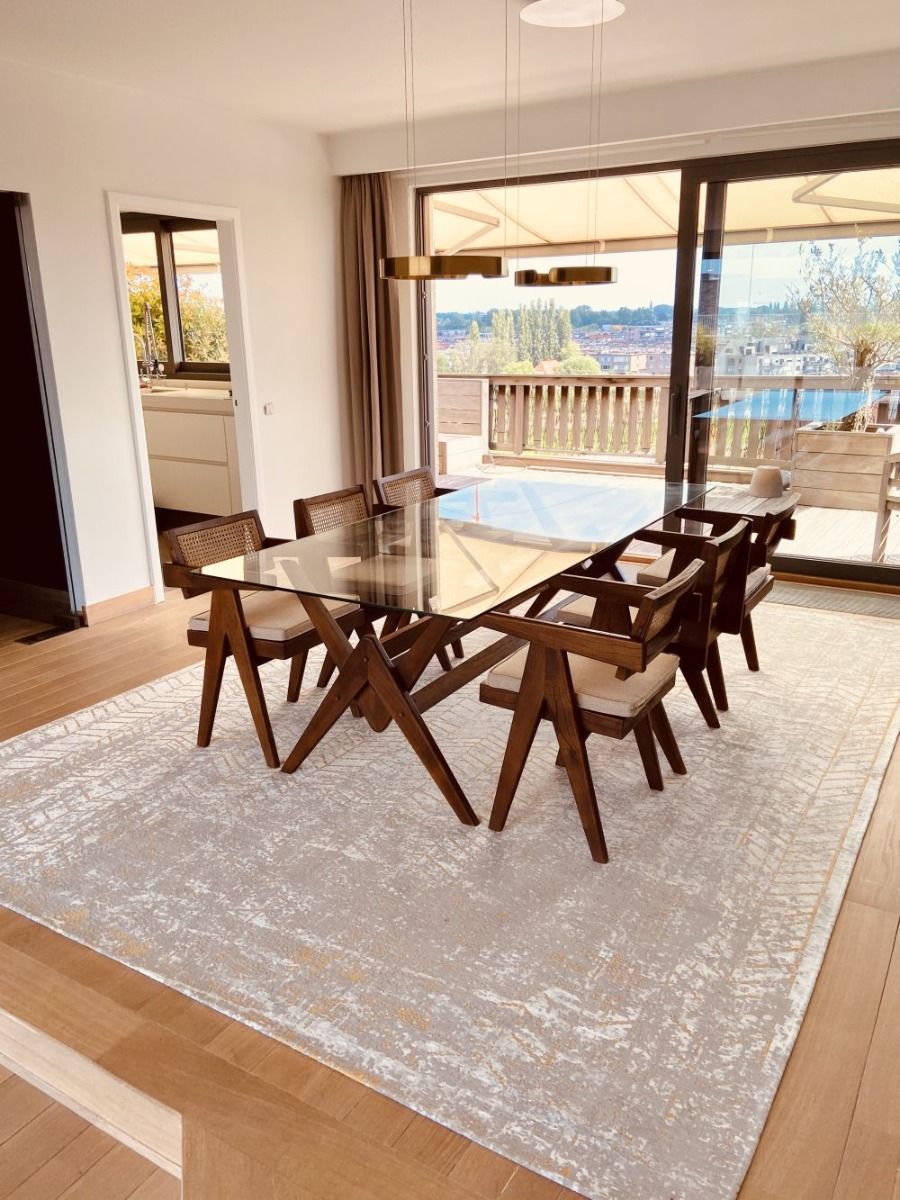
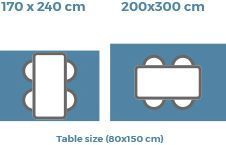
Four Seat Dining Table
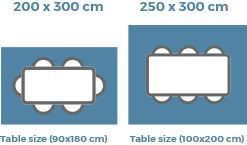
Six Seat Dining Table
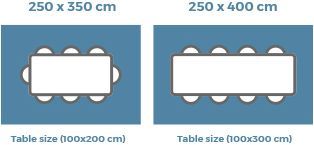
Eight Seat Dining Table
If you are in the second category, and use the table only a couple of times per year, you would probably get away with adding just 50 cm per size, which means you would require a
Of course, there are exceptions to this rule, but you should keep this in mind: If you don’t have enough place, you just need to maximise what you can.
Remember also,
The same rule applies for square tables on square carpets, or round tables on round carpets.
A special case is when you have a square table on a round carpet – in this case you need to add 90 to 100 cm minimum on each size of the table, in order for the chair to stay on the carpet. As an example, if you have a table, which is 120 cm square, then the round carpet would have a minimum diameter of 300 cm.
The other way around, a round table on a square carpet, just use the standard measurements, as explained above.
We have added several drawings to help you decide what is the best size for your dining room carpet, and also a few photos from products, which would help you get inspired.


Round and Square Dining Tables

Different size options for the rug in the living room
When the clients ask us whether there is a “golden rule” when choosing the size of a carpet for their living, our answer is always the same: There is no “golden rule”! It all depends on your taste, the place you have, and the type of furniture you already have in that room.
There are, however, 3 main options when talking about size:
Option 1:
A large rug, where all furniture pieces, such as armchairs, sofas, corner sofa, tables and footstools will sit on. Such a living room will look more pulled together when you choose such a size. What do you take into account when you decide for this layout? There are a few tips, amongst which:
- Keep your rug around 30 to 40 cm away from the free, visible walls;
- Make sure the distance from the back feet/side of the furniture to the edge of the carpet is of at least 10-15 cm;
- Be careful with a too intricate pattern, since some of the pieces of the furniture will cover it and the effect will be lost.
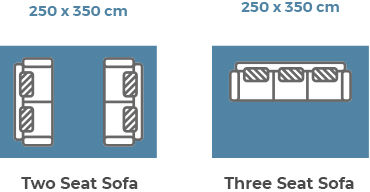
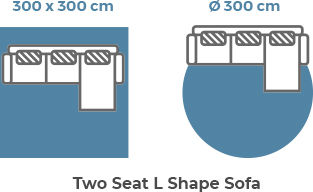
Option 2:
Again a fairly large rug, but in this case, only the front feet of the furniture will sit on the rug. You will still achieve the pulled together look, with a slightly smaller budget. There are of course a few tips to help you measure the right size:
- The same as above, keep your rug around 30 to 40 cm away from the free, visible walls;
- Depending on how high are the feet of your sofa, for example, you need to make sure your carpet lies far enough under it so you don’t get to see the floor under.
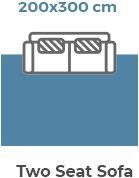

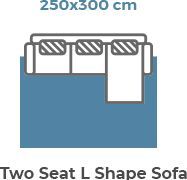
Option 3:
A small rug, lying free between all pieces of furniture could also be a solution. This is when you want to bring a carpet with a particular pattern or a bright colour in your living room. It can work, as long as you take the following into account:
- A small rug will make your room look smaller as well, so be careful with this in small, dark living rooms;
- Think about that coffee table. Go for smaller side tables instead, so you can actually enjoy the carpet and it’s design even more.
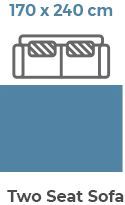
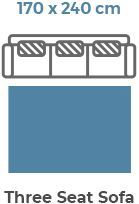

As we said above, there is no “golden rule”, therefore feel free to improvise, combine or use any of the above tips. At the end of the day, it is your home we are talking about, and you should decorate it according to your taste.
How about the rug in the bedroom?
Gone are the days when you threw a couple of small carpets around the bed and the job was done. Bedrooms have become far more important in our daily (or nightly) life, and decorating them well takes time and energy. It should do anyway, because living a good life relies on a good, healthy night sleep.
Ensuring that you achieve a calm, balanced interior scheme and the right carpet/area rug can make it or break it can definitely help this. So our suggestion is take your time, and choose what is right for you. At the end of the day it’s your home, so you need to decide. We have put together a few tips, which we hope will help you choose the right area rug.

I know it sounds strange, but leaving it to the last minute in choosing the carpet sounds like decorating the bed, and then ordering the furniture. We feel that the carpet is one of the first objects you should consider. This is because you have usually much more choice in paint, wallpaper, curtains, etc. Otherwise you might be searching months for the ideal rug.
You should also consider the type of carpet you want. If you want a plushy, luxurious feeling at your feet when you step out of bed in the morning, a shaggy, high-pile rug might be the answer. Just keep in mind that this type needs a little more maintenance, so it wouldn’t be ideal if you choose for a rug that would be half-covered by your bed. It is beautiful but slightly less practical. Of course, if you have enough space under it that you can regularly vacuum clean it, this is not a problem.
Take into account intricate patterns: they might get lost under the bed, so it might not be such a great idea if you place the carpet halfway under your bed. A pattern needs to be shown, so if you have the place next to your bed, I would rather suggest presenting it there.
Bedrooms have usually less traffic, so here you can choose for a more delicate structure should you wish. Think about a fine bamboo silk rug, or a beautiful cowhide...
It might sound strange, but sometimes a large rug placed halfway under the bed is more budget friendly, as well as creating a much bigger visual impact and Wow factor. Think about the fact that you would need minimum 60 cm of carpet around the bed in order to maintain the proportions in the room.
Please see below a couple of sketches with different layout options, to help you decide which size and format would suit your bedroom best.
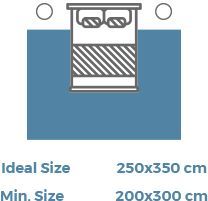
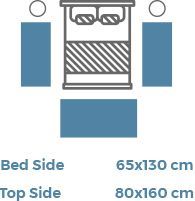
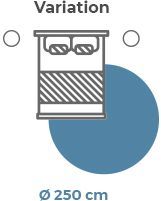
Of course you can always contact us for further input and advice. After all, we’ve been doing this job for more than a hundred years.
And finally, the “Golden Rule” is that there are no rules. It is your taste in the end; so don’t be put off by what other people say. Dare to be unique, dare to be different.




